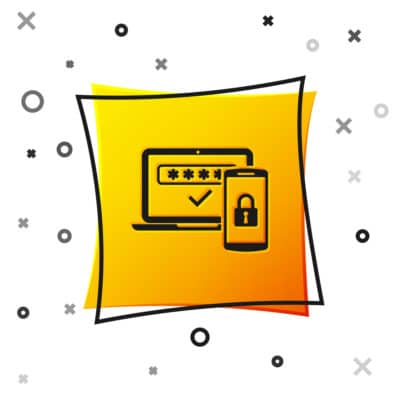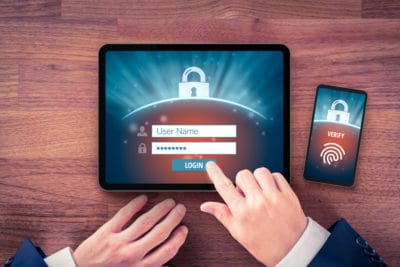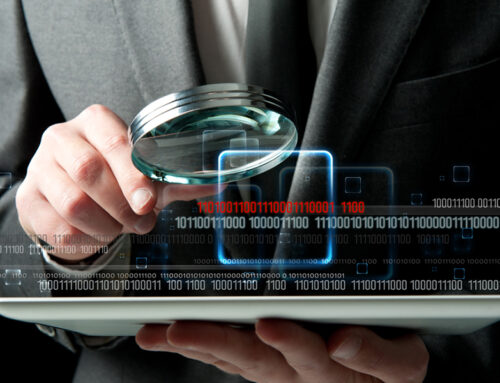 With data breaches continually on the rise in headlines and customers becoming more personally involved in the security of their information, most businesses already understand the importance of cybersecurity. Although cyberattacks on large corporations get the most air time, small businesses are a common target for cybercriminals as well. If the system for your small business is set up with wifi access and cloud storage solutions, it’s likely that you already have some security measures in place.
With data breaches continually on the rise in headlines and customers becoming more personally involved in the security of their information, most businesses already understand the importance of cybersecurity. Although cyberattacks on large corporations get the most air time, small businesses are a common target for cybercriminals as well. If the system for your small business is set up with wifi access and cloud storage solutions, it’s likely that you already have some security measures in place.
However, implementing a multi-factor authentication system is an easy way to further protect your sensitive data from would-be thieves by adding an extra layer of security.
What Is Two-Factor Authentication?
Most small businesses already have some form of authentication set up within their systems. This is often done by requiring employees to enter a single sign-on password to access company data, helping to ensure sensitive information is seen only by authorized individuals and not susceptible to unauthorized access. Two-factor authentication, or multi-factor authentication, simply adds a step to this process. Once the initial password is entered, the system requires further proof that the user account requesting access is authorized. This can be done in a variety of ways, such as creating a randomly generated password on an external device, utilizing biometric identifiers or requesting confirmation on the employee’s smartphone.
Why Should I Use Multi-Factor Authentication?
 Although you might feel your data is secure under traditional password protection, there are many ways cybercriminals can get hold of employee usernames and passwords through phishing to gain access to sensitive information. Email accounts are especially vulnerable to these types of attacks, allowing criminals to send urgent requests to unsuspecting individuals and ask them to change passwords or fill in personal information. These emails often direct the target to a website designed to look legitimate, but any information entered is sent straight to the criminal.
Although you might feel your data is secure under traditional password protection, there are many ways cybercriminals can get hold of employee usernames and passwords through phishing to gain access to sensitive information. Email accounts are especially vulnerable to these types of attacks, allowing criminals to send urgent requests to unsuspecting individuals and ask them to change passwords or fill in personal information. These emails often direct the target to a website designed to look legitimate, but any information entered is sent straight to the criminal.
The hacker can then use the individual’s password to gain entry or use the personal information obtained to answer security questions and find out the password. If your company is only set up on a single-factor authentication system, this is all they need to access your most sensitive data.
Noncompliance by employees is another major security concern in companies. Staff may resent the need to generate complex passwords for multiple systems and will find creative ways to subvert this process. Setting up multi-factor can relieve them of this burden by enhancing IT security enough to only require remembering one complex passcode.
Multi-factor authentication makes this information useless without the other authenticators. Even if a hacker discovers your password, the two-step verification requires additional information for access. This renders most phishing efforts useless and protects company and client information.
Authentication Factor Types
There are five types of authentication factors a company can use. Which you choose depends on your company’s needs, budget and technical savvy.
1. Something you know
This is the most common authentication factor and includes passwords and personal identification numbers (PINs). It’s likely your business is already using this factor.
2. Something you have
This factor requires the use of an item carried on your person, such as a mobile phone, personal identity verification (PIV) card, fobs, USB drive or some other type of hardware token. These authenticators can be used by verifying your identity or generating a one-time password that either expires when used or after a set amount of time. Once expired, a new password is generated.
3. Something you are
This authenticator is based on biometrics. Your identity is verified using information that is unique to you, such as a fingerprint, handprint, iris, retina, face or voice.
4. Somewhere you are
IP addresses are the most common identifier for this factor. Companies have the ability to limit the geographical area in which someone can access the system, only allowing logins from the country where the business is located. Media Access Control (MAC) addresses are another option. These designate specific computers to have access, preventing employees from logging on with their online accounts using unapproved devices.
5. Something you do
This is the least commonly used factor and requires some action by the person requesting access. The action can be some form of touch or gesture. For example, Picture Password on Windows 8 allows users to set up a series of interactions with a photo for authentication, either drawing or clicking on it in a specific order.
The Difference Between Multi-Step and Multi-Factor Authentication
It’s important to note that this type of authentication and multi-step authentication should not be confused. Although they sound like the same thing, the authentication process is very different between the two and changes the security benefits provided. Multi-step authentication verifies each part separately. It first authenticates the username and password. Then, if those are correct, it moves on to the next authenticator. Multi-factor authentications verify everything at once. If the authentication fails, there is no way to know if the username, password or additional factor is the issue. With multi-step authentication, hackers will know if the username and password are correct before moving on to the next authenticator. This makes multi-factor authorization the more secure option.
Setting Up Two-Factor Authentication
Fortunately, if your business is ready to set up multi-factor authentication, the process is straightforward if you follow the following steps.
1. Determine what needs protection
An internet connection is necessary for hackers to gain access remotely. This means the bulk of risk lies with applications that rely on the internet, such as email. To give your small business the protection it needs without unnecessary disruption, identify the applications you use that require an internet connection and implement two-factor authentication on those applications.
2. Determine who needs protection
Some industries, especially those that specialize in finances, have regulations that specify this authentication is to be required for all employees. If your small business is unregulated, you have the freedom to decide which of your staff are most at risk and require a second authenticator only for those individuals. Those who require email and regularly access your business applications outside the office are the ones most in need of two-factor authentication to protect your data from hackers. Having the ability to target relevant individuals with this security feature will reduce disruption to your operations without sacrificing your cybersecurity.
3. Decide which authentication factor types work best for your business
Biometrics authentication may sound like an exciting way to protect your information, but installing the scanners and setting it up can be out of budget for a small business. You need to choose an option that won’t deplete your financial resources but will provide the additional security you need. It’s also important to figure out which authentication factor is the best fit for the culture of your company. If your business operates in a secured building, it might be beneficial to use PIV cards that can also serve as keys to allow employees into secure areas. For companies that require less real-world security, a simple verification code sent to an employee’s mobile device or a mobile app that generates secure passwords can be enough. Remember that more complex systems may require additional time to get set up, so your timeline is a second factor to consider. The more seamless the integration, the more likely your employees will welcome the changes to their daily routine.
4. Create a deployment strategy
Give your staff advance notice of the security changes you will be implementing and let them know what the two-factor authentication process will require. Some companies will find value in giving their employees options between authentication methods or using a separate method for highly sensitive data. Plan this out carefully so you won’t need to make adjustments later. Gather the necessary materials needed, such as purchasing hardware tokens or identifying the mobile app your business will use, and set a date for employees to expect full implementation. Encourage your employees to communicate with you about authentication issues that impact the flow of their work or security concerns that may have been overlooked, and work together to identify the best solution for the company.
Two-Factor Authentication Is Just Another Tool
It can be easy to look at this authentication as a solid shield against cyberattacks, but it’s really just another tool in your security arsenal. It’s important to note that using two-factor authentication provides extra protection but is not foolproof. When it comes to data breach prevention, it’s good practice to stay informed on the latest security trends and adjust your approach as cybersecurity evolves. Multi-factor authentication should be included the same way your business uses firewalls, anti-spam and anti-virus. When facing today’s security threats, it’s a baseline measure that should be taken to keep your proprietary information and client data secure from outside attackers.
About the Author: EIRE Systems
EIRE Systems is a leading independent provider of professional IT, AV and Access Security services to the financial, insurance, manufacturing, health care, retail, construction, hospitality, commercial real estate, legal, educational and multinational sectors in Japan and throughout the Asia Pacific region. EIRE Systems has expertise across a wide spectrum of Information Technologies, with a track record for successfully completing hundreds of assignments since its establishment in 1996.



